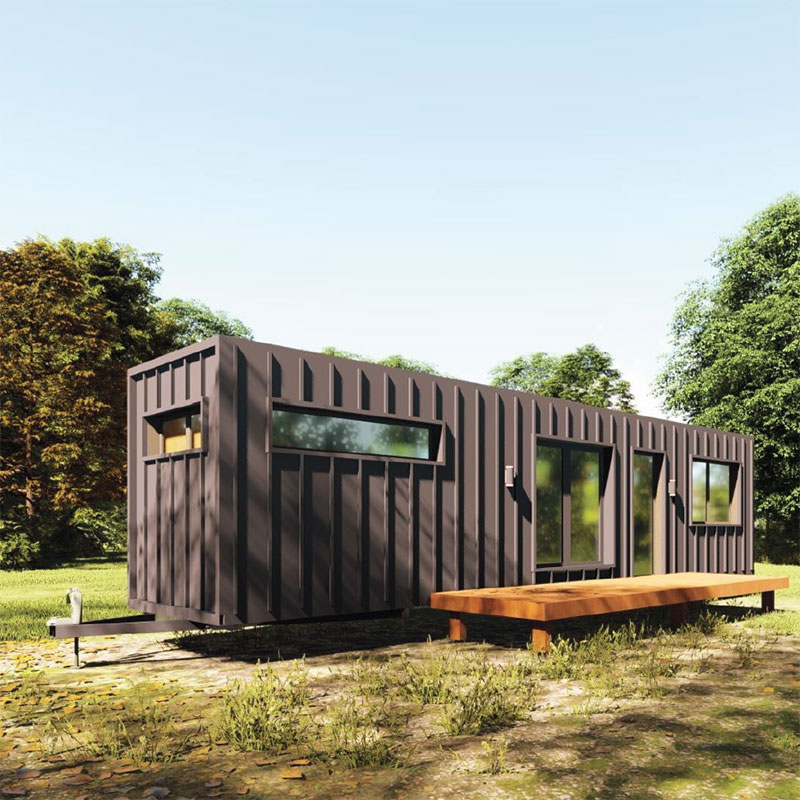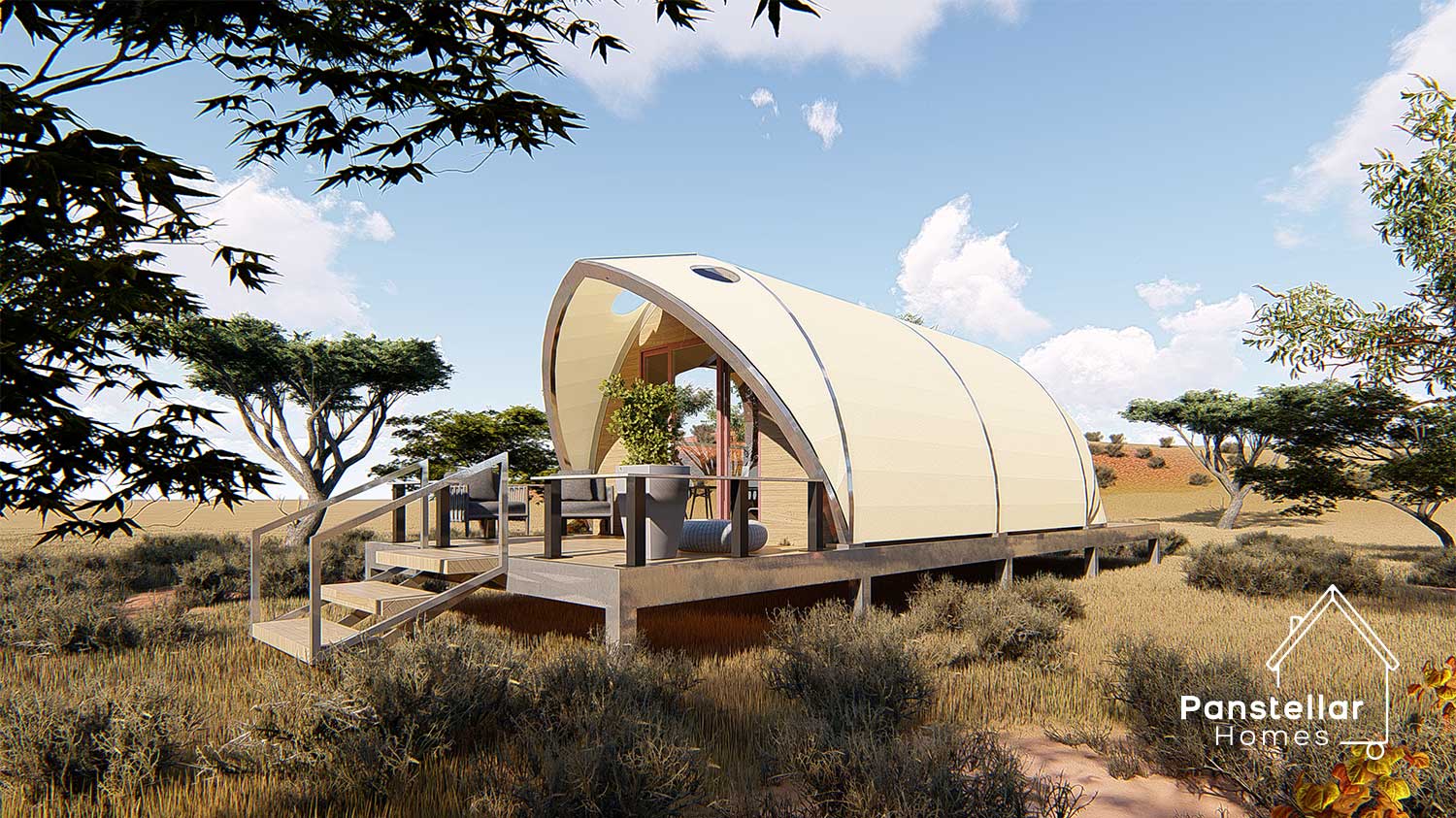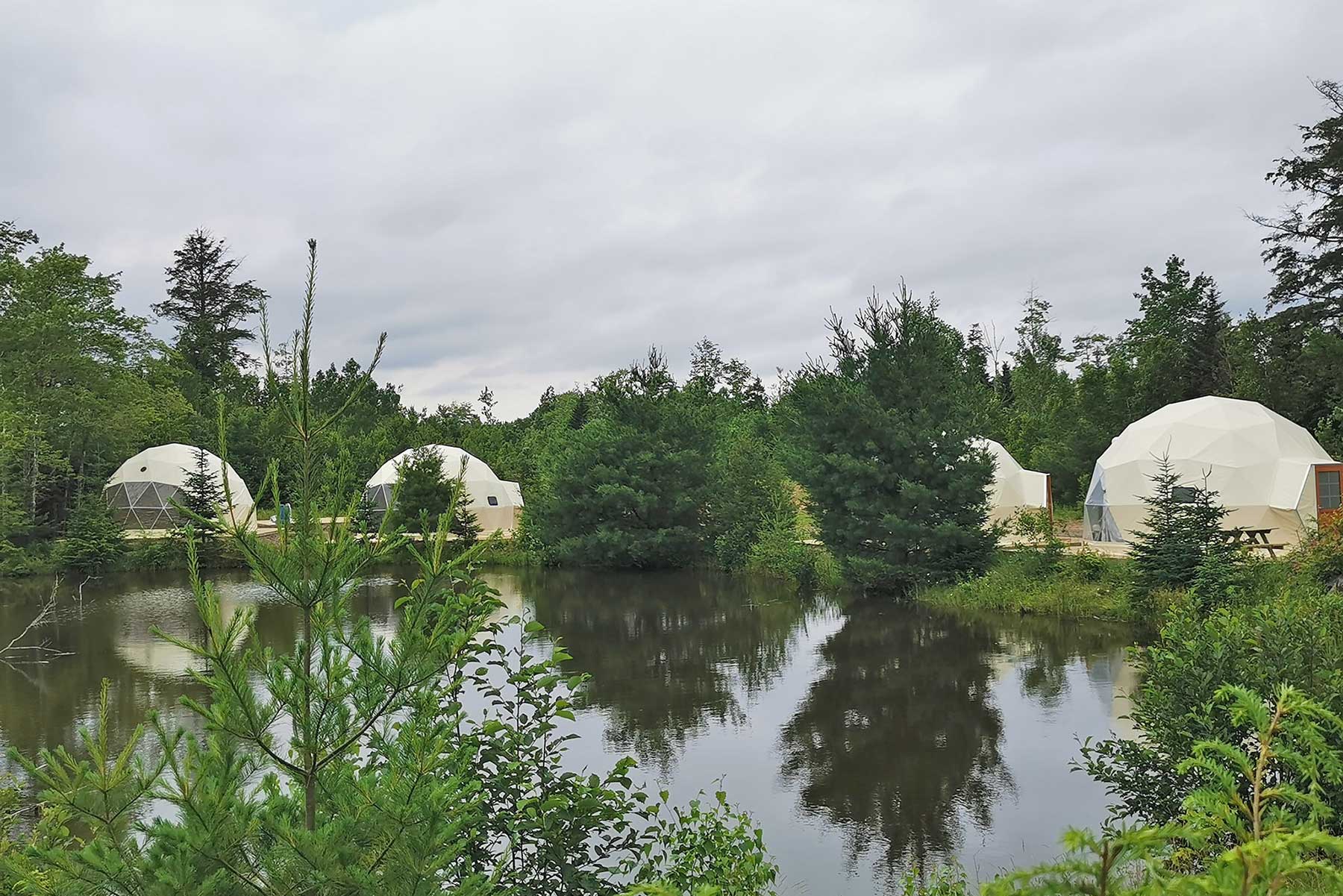How To Find The Right Home For You: Small Prefab Homes – What you need to know
Finding a home that’s perfect for you is an essential aspect of creating the lifestyle of your dreams, and Panstellar Homes is here to help your dreams become reality. Combining sustainability and flexibility with beautiful and innovative design, the small prefab homes in Panstellar Homes’ range offer a unique way of living, perfect for singles, couples, and families.
So, what exactly are Prefab Homes?
Simply put, prefab (prefabricated) homes are constructed off-site, before being assembled and installed onsite. This maneuverability and reduced construction time onsite optimises the construction process, and makes these small homes easily accessible, ideal if you are in need of flexible arrangements.
You can simply choose from the large and customizable range on offer, or talk to a professional about what the best fit for you is going to be. As prefab homes are becoming increasingly popular across the world, their design, functionality, and availability continue to develop and grow, constantly evolving to become suitable for an ever larger range of living requirements.
What are the benefits of small homes?
The idea of downsizing to a small home may seem daunting to some, but there are many benefits to smaller living that often get overlooked. While these homes can appear cramped or squished, they actually provide a spacious living arrangement that combines practicality with beautiful designs, making them feel the perfect balance of simultaneously roomy and cozy.
Providing a cost effective solution to the growing housing issue, Panstellar Homes offers financial freedom and an affordable alternative, without sacrificing any style or comfort. This cost-effective living style makes small homes perfect for families, retirees, and first home buyers. Another large benefit of downsizing your home is the reduced amount of maintenance needed for upkeep.
Small homes require much less cleaning and maintenance to achieve the same standard of living as a regular house, meaning that both work and costs are reduced. Small homes also offer sustainability and are environmentally conscious.
How can buying small and prefab help to decrease your environmental impact?
By optimizing the construction process, small prefab homes have a lower environmental impact. Efficient design and production lessens how much waste ends up in landfill by using fewer resources, and lowers energy usage, as well as reducing carbon emissions by not having the large truck mileage that is required on a big construction site.
This environmentally conscious approach to home construction provides a sustainable alternative to standard home ownership, maintaining a low carbon footprint without sacrificing living style.
Another benefit of small homes is that they take up less space, meaning that you have more flexible requirements regarding land, and leaving you able to strategically utilize smaller areas of land or leave room for other landscaping plans, making the most out of what you have.
How does this compare to the cost of building a large home?
The average cost of building a regular home in Australia (which is around 230 square metres) was calculated to be around $320,000 in 2019, or roughly $1394 per square metre, not including any design, planning permits, or cost blow-outs. Compare this to the $14,000 that is the starting price of a prefab home from Panstellar Homes, and you’ll see that small homes are far more financially accessible. In terms of the average timeframe the construction of a regular size house can take, it can range anywhere from 6-12 months, or even longer depending on weather, availability of contractors, and construction issues.
Prefab homes, on the other hand, can be constructed in a minimum of weeks. Another factor to consider when comparing the construction of regular versus small prefab homes is the need for contractors. Finally, regular homes, as a perfector of them not being small homes, take up more space and often require large areas of flat land, needing earthwork, as well permits for most aspects of construction.
What to Look For in a Small Prefab Home
It is common, when looking to buy a new home, to feel a bit overwhelmed trying to figure out what the best option is going to be for you. Some key things to look out for when considering your new home include;
- Design
- Budgeting
- Finance
- Buying land
- Design
- Construction
- and resale
For a first home buyer it is important to educate yourself on how much you should loan and you should save for a deposit. Remember to factor in the cost of land in the area you want to buy and consider how it fits into your budget. Aside from finding a block of land that you like and are excited and comfortable with, consider how suitable the block is for building your home, as while prefab homes can be built on a slope, it may present some challenges and additional costs. Also think about any other issues you may face with the land, such as whether it’s at risk of bushfires or flooding. When looking at prefab home supplier it is important to note a few things, including whether they have a proven track record and positive testimonials, inclusions and customization to suit your needs, the ability to upgrade further down the track, and good communication. When choosing a prefab design it is good to start with the floorplan so you can decide what size home will best suit your needs, then, being guided by your budget, you can choose your preferred layout and personal living style. Resale of prebab homes can be easier due to the ability to relocate, their value and growing popularity make them perfect for rental properties or Airbnb.
A closer look at the Panstellar Small Prefab homes
The range of small prefab homes at Panstellar Homes provides the perfect living situation for you, encompassing all your needs.
Takeaway
- Aesthetically appealing with modern designs
- Soundly constructed with your safety and comfort in mind
- Financially sustainable to suit your cost requirements
- Environmentally conscious with a low carbon footprint, and most importantly, fun and easy to live in






